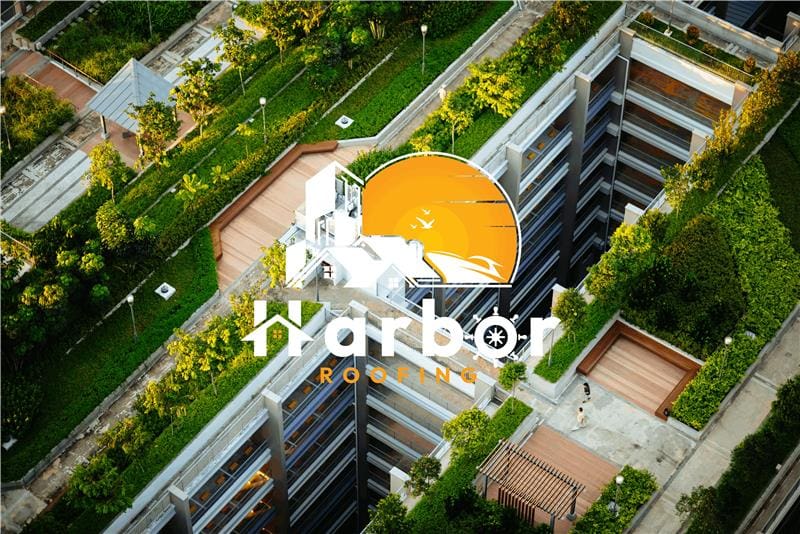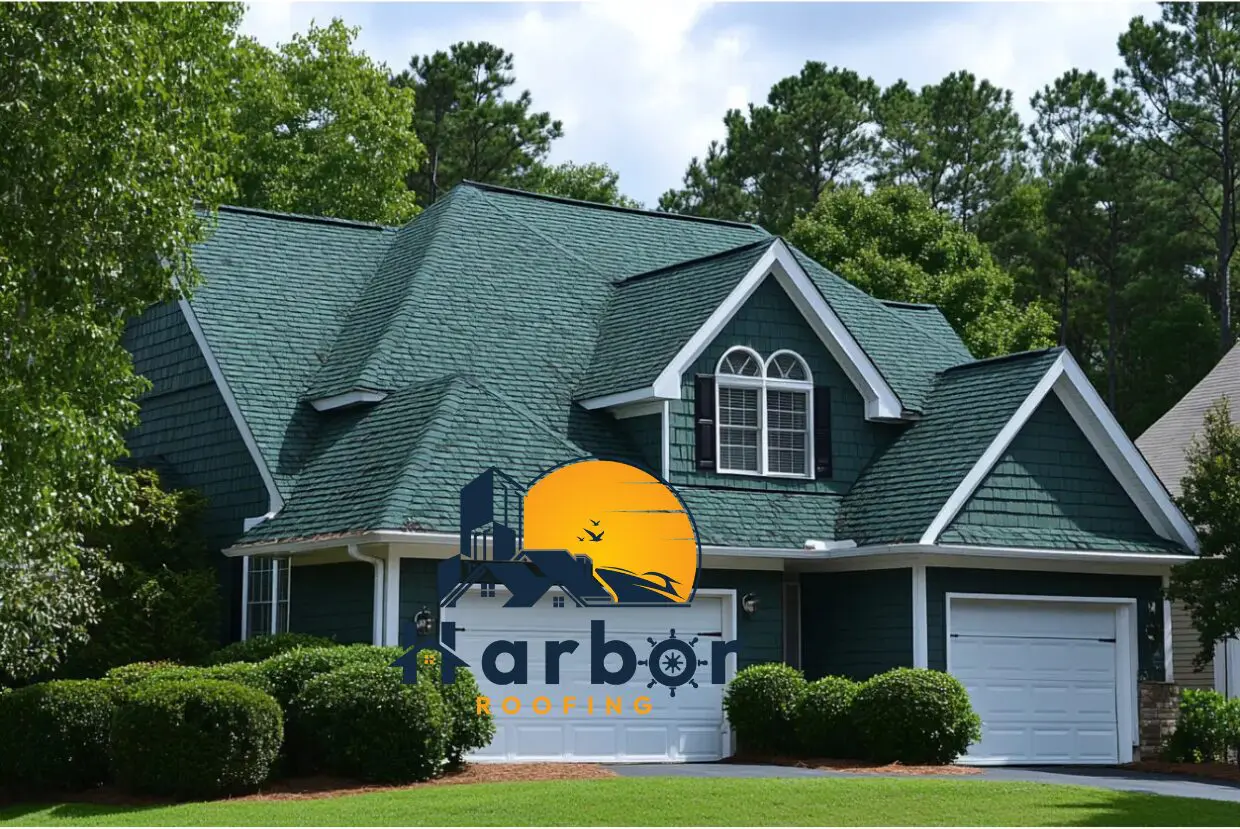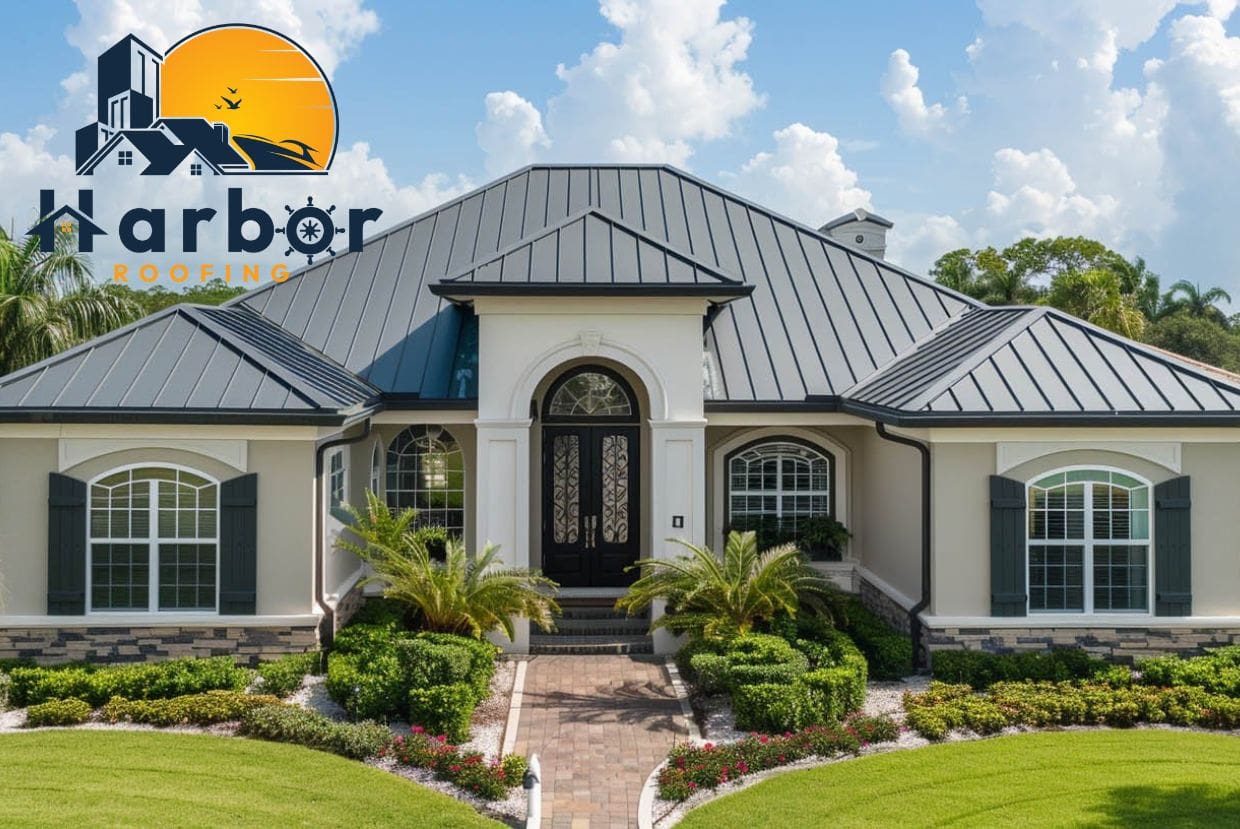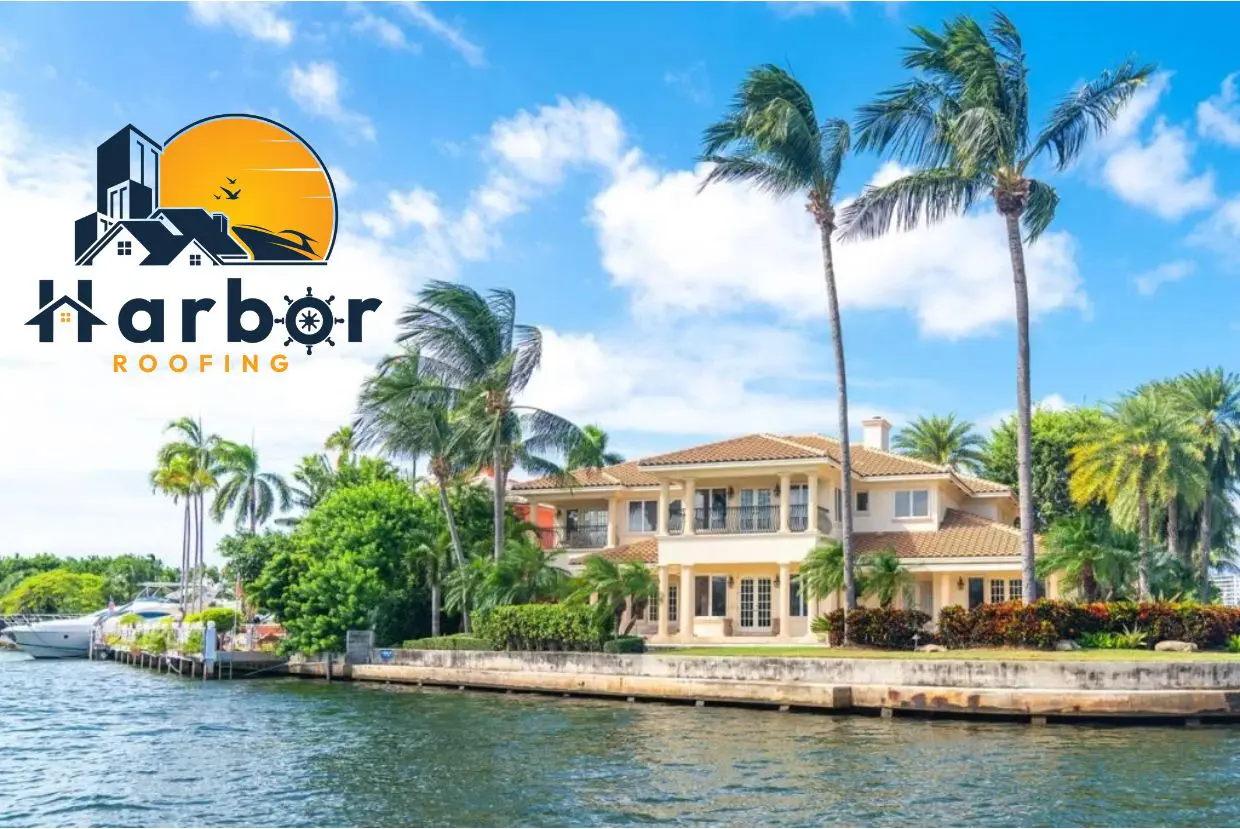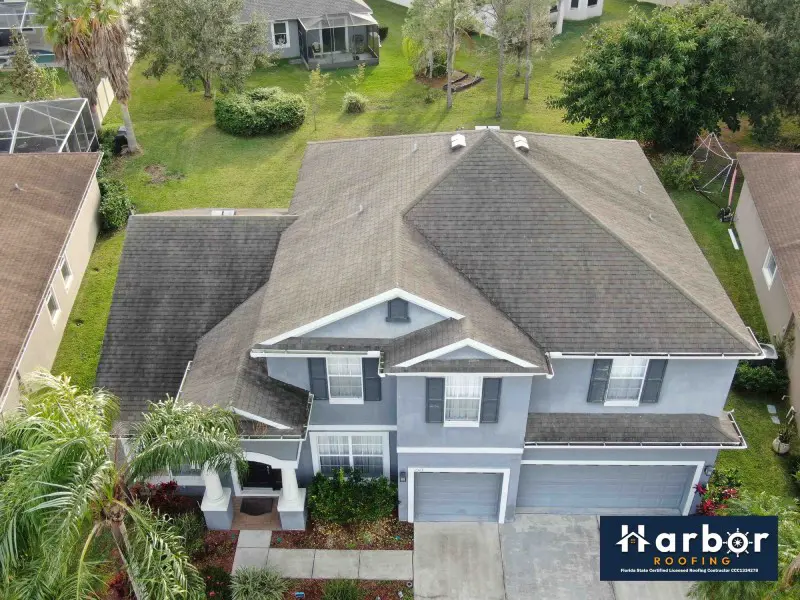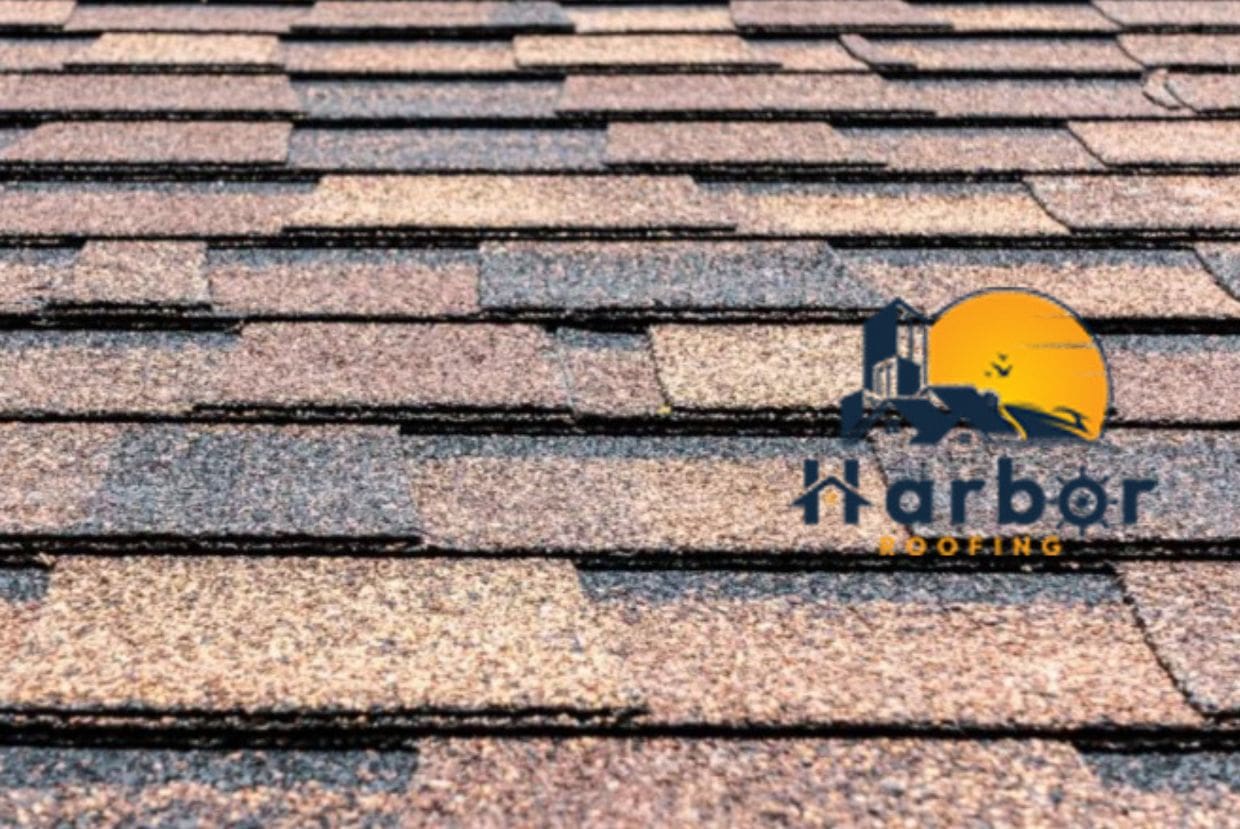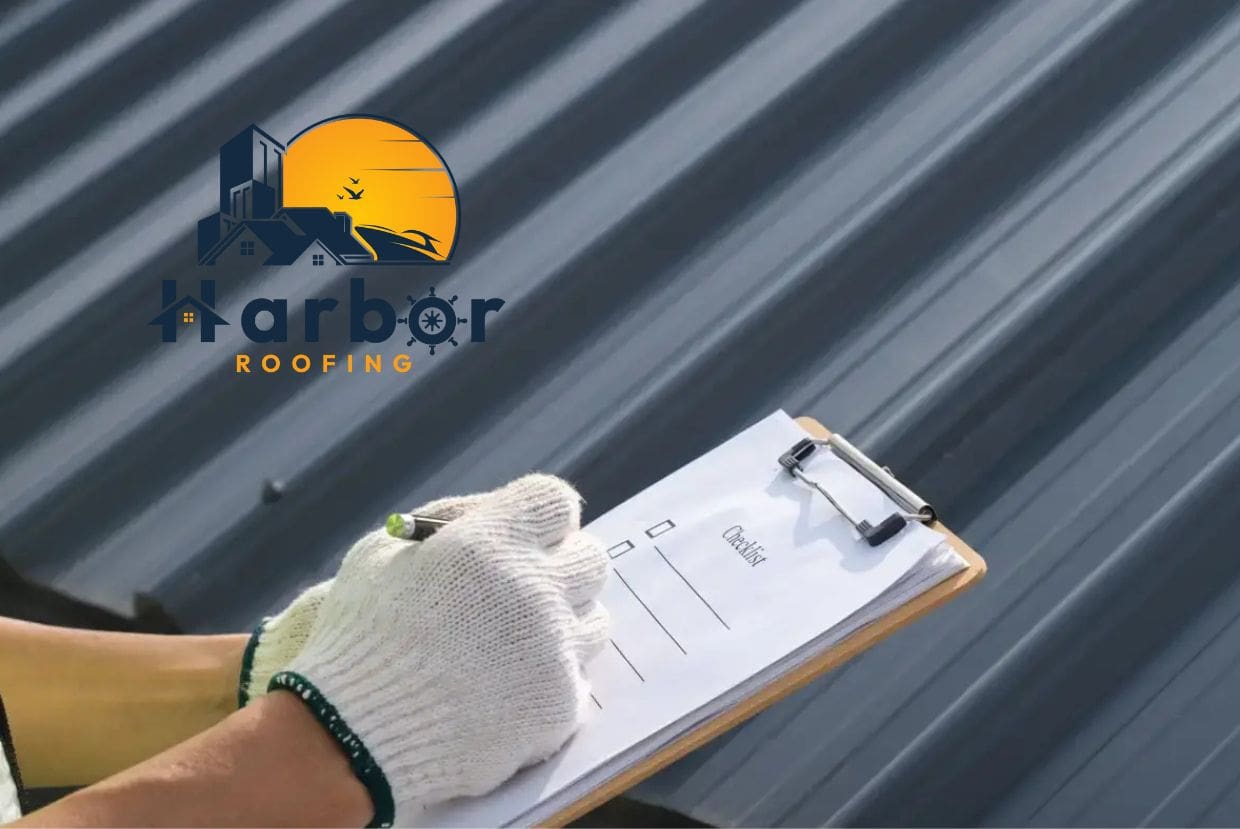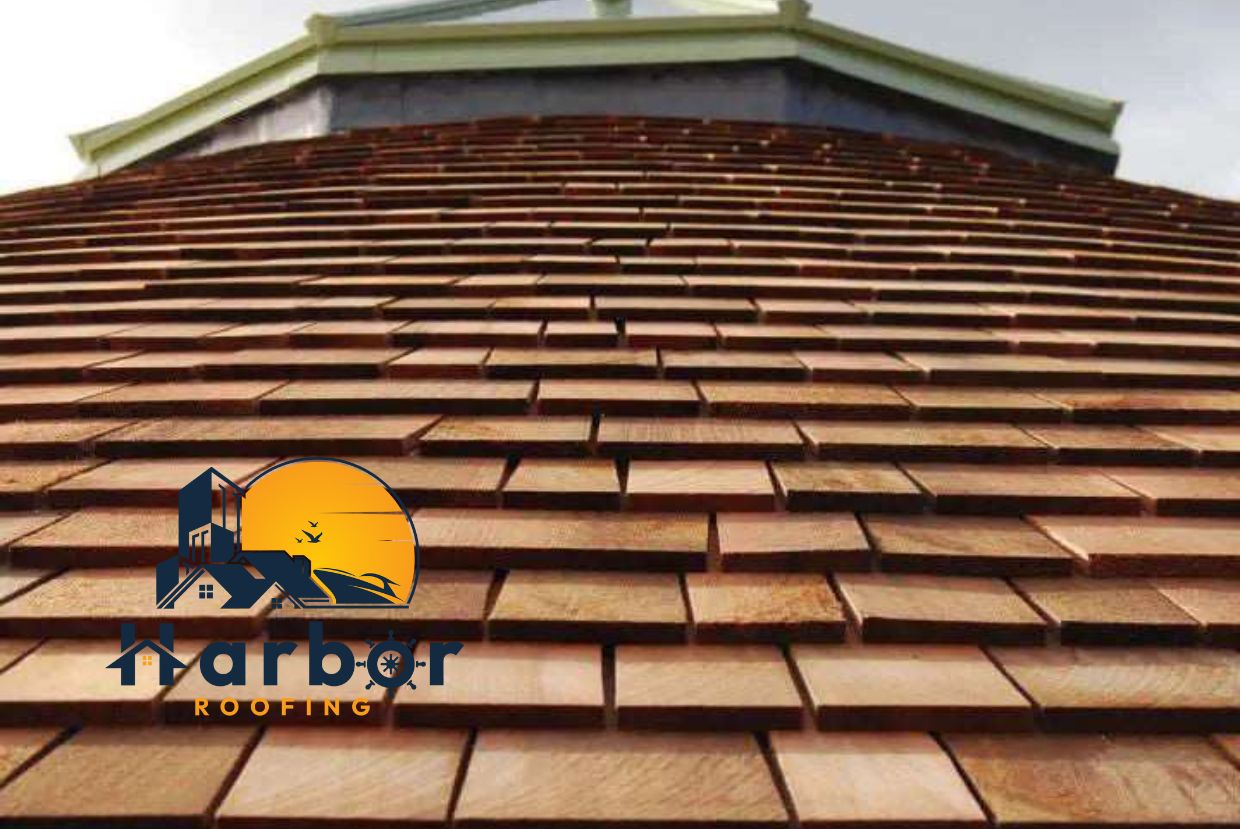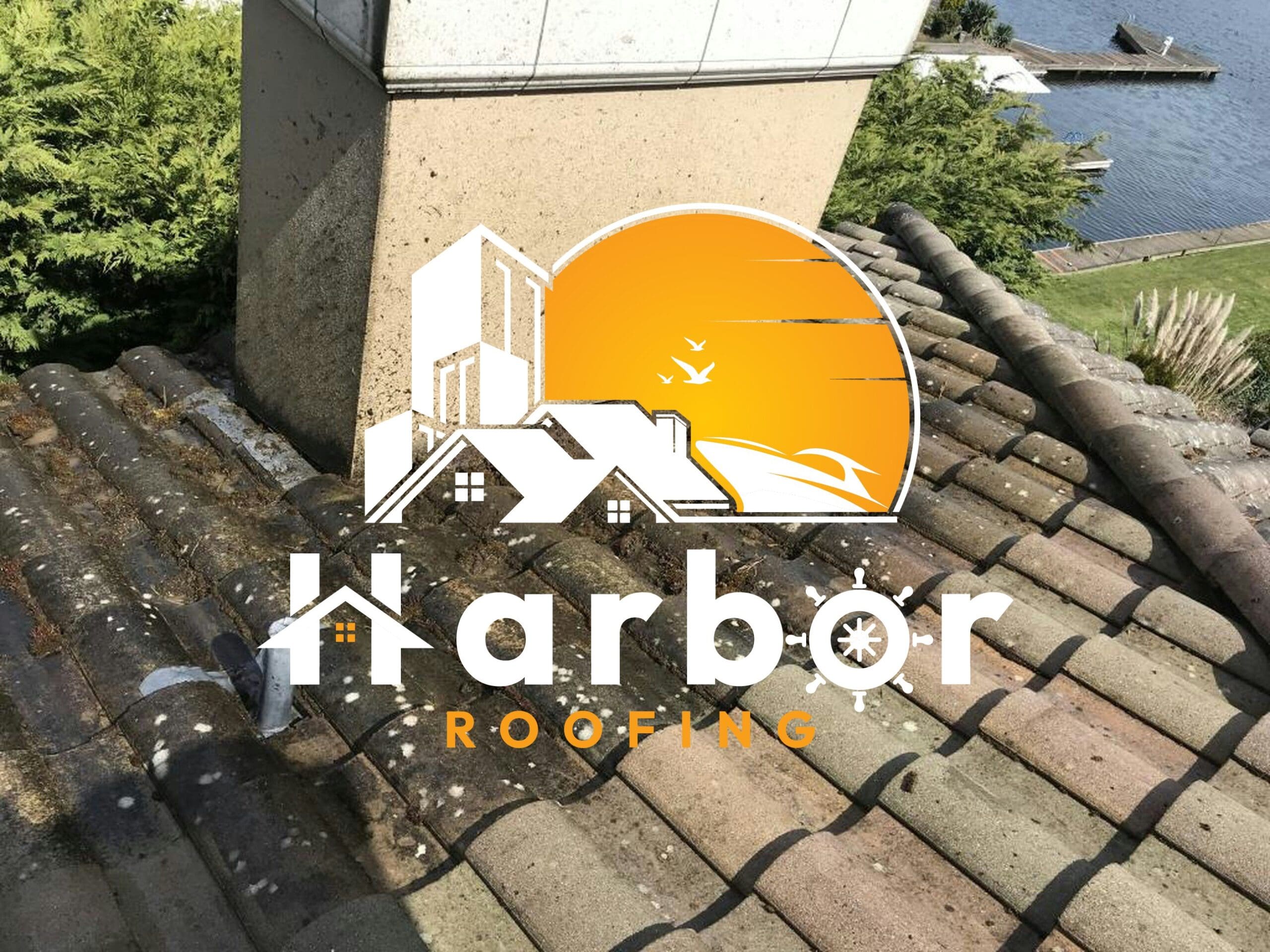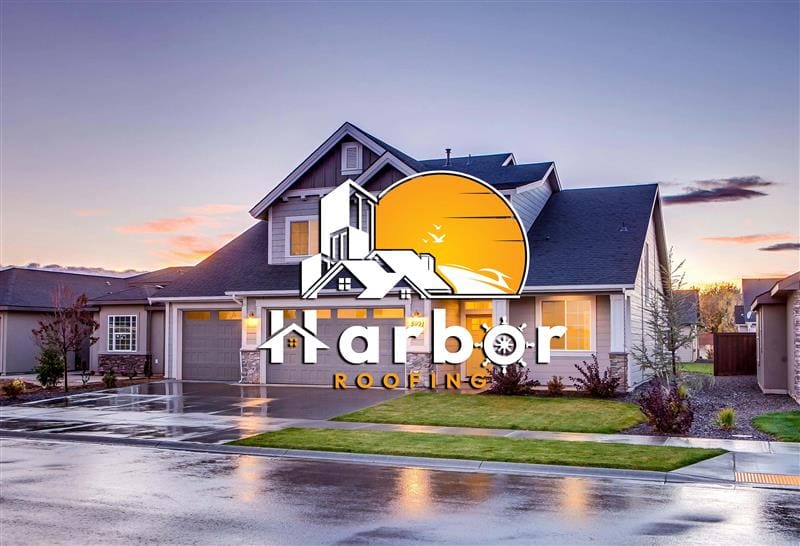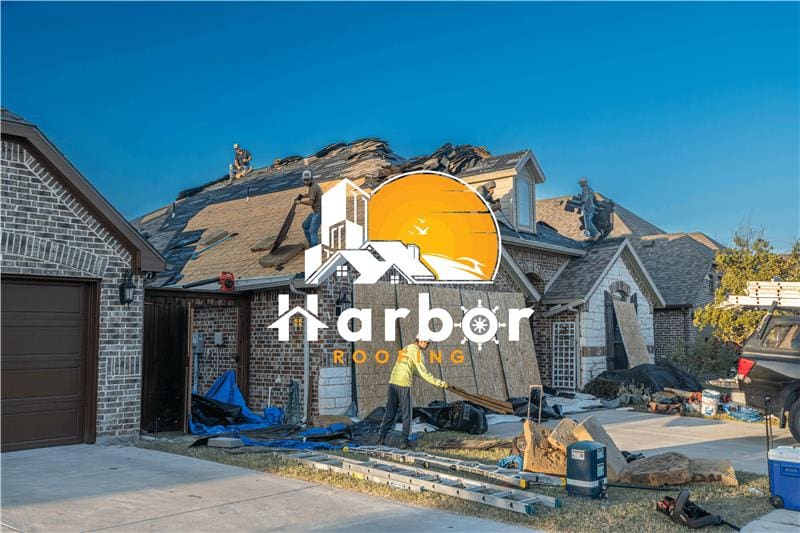Table of contents
- What is Recycled Roofing?
- Why Recycled Roofing Makes Smart Sense?
- Discovering Recycled Roofing Options
- The Dual Benefits of Recycled Roofs: Environmental and Economic
- How to Select the Best Recycled Roofing
- The Future of Sustainable Roofing
- Maintaining Your Recycled Roof
- Partnering with the Right Professionals: Harbor Roofing
- The Path to Eco-Friendly Living
When it comes to construction or remodeling your house, there’s more on the line than mere curb appeal or sturdiness—your decisions can affect the world directly. A simple yet highly underappreciated way to create a positive impact on the planet is to use recycled roofing materials. You can think of it as giving your house an intelligent, earth-friendly facelift that not only looks aesthetically pleasing but genuinely contributes to the vitality of the environment we live in.
From shingles made of old tires to roofs forged from repurposed metal, modern-day recycled roofing solutions are not only energy-efficient and last long but are a primary means to fulfill one’s environmental responsibility. This guide explores the benefits, types, and long-term advantages of sustainable roofing options to help you build greener, smarter homes.
What is Recycled Roofing?
Recycled roofing refers to a type of roofing material created from formerly used materials rather than new ones. It seeks to repurpose used materials for new construction so as to avoid wasting valuable materials in landfills. Instead, such materials are recovered, processed, and eventually recycled to make houses truly eco-friendly.
Some of the most common recycled roofing materials for green home construction are:
- Asphalt shingles are built of recycled material
- Metal roofing comprising recycled metals like steel, aluminum, or copper
- Rubber shingles made from re-purposed tires
- Plastic and composite shingles made from post-consumer waste
- Reclaimed wood derived from barns or industrial buildings
Recycled roofing is not simply about cutting down on waste—it’s about investing in a roof that’s built to last while supporting a healthier planet.
Why Recycled Roofing Makes Smart Sense?
1. A Greener Footprint
Selecting recycled roofing prevents material from entering landfills, which reduces the need for relying on non-renewable raw materials. It’s an easy but effective way to reduce your home’s carbon footprint.
The Environmental Protection Agency (EPA) has indicated that the amount of debris sent to landfills is considerably reduced by turning to sustainable construction and demolition practices, such as the use of recycled roofing, whilst preserving natural resources.
2. Naturally Energy-Efficient
Several recycled roofing products, such as metal or composite, deflect sunlight, which helps keep your home cooler in the summer. It’s akin to providing your house with an in-built regulatory system, without bearing excess cooling costs in your electric bill.
According to the U.S. Department of Energy (DOE), cool roofing materials, including recycled options, can lower surface temperature, which brings down air conditioning demands, particularly in hot climates.
3. Engineered for Durability
Recycling doesn’t necessarily mean lightweight. These products are designed for durability, whether it’s recycled steel or weather-resistant rubber. Recycled roofing can withstand extreme weather events like intense exposure to sun and UV radiation, as well as heavy rain and storms, which in turn reduces the phenomenon of thermal expansion and contraction.
Recycled metal and rubber roofing options stand out for their inbuilt ability to resist mold, warping, and cracking. This helps explain why they last longer than traditional roofing materials. This long-lasting performance ensures homeowners can enjoy solid protection for decades to come without spending on repairs.
4. Cost-Effective Over Time
Although the initial cost of some recycled materials might be higher, their extended lifespan and minimum maintenance requirements often translate into huge long-term savings.
5. Style Without Compromise
Contemporary recycled roofing materials are available in a wide variety of colors, textures, and finishes. Whether you prefer modern minimalism or rustic charm, there’s a roofing option to give an aesthetic touch to your house.
Discovering Recycled Roofing Options
1. Recycled Asphalt Shingles
Recycled roof shingles are not only the most readily available but also budget-friendly forms of recycled roofing out there. Numerous brands utilize recycled asphalt due to its high performance levels and waste-minimizing features.
Advantages:
- Cost-effective
- Fireproof
- Simple installation and replacement procedure
Green Impact: Recycled roof shingles prevent old roofing products and petroleum wastes from ending up in landfills.
2. Recycled Metal Roofing
Metal roofing is a sustainable option on its own, and when it comprises recycled content, its green potential is further enhanced. Metals like aluminum, copper, and steel can be recycled infinitely without losing their inherent properties or quality.
Benefits:
- A lifespan of 40-70 years
- Reflective surface that lowers cooling bills
- 100% recyclable at end-of-life
Green Impact: Metal roof mostly comprises 50–95% recycled content, and in its final form is 100% recyclable.
3. Recycled Rubber Shingles
Constructed using recycled tires, rubber shingles are pliable, long-lasting, and resistant to weather changes. In terms of appearance, they resemble the standard slate or cedar but offer enhanced practical features.
Advantages:
- Impact resistant and lightweight
- Long-lasting and low maintenance
- Fire and UV resistant
Environmental Impact: Recycling rubber tires keeps them away from piling up in landfills, where they are a primary cause of pollution.
4. Plastic and Composite Shingles
Crafted using a mixture of recycled plastics and other compounds, these shingles provide the texture of wood or slate with contemporary durability.
Advantages:
- Resistant to warping and cracking
- Easy to transport and install
- A variety of finishes and colors
Green Impact: Extends the life of plastics that would otherwise end up in landfills and eventually pollute oceans and waterways. If current trends continue, plastic waste is predicted to nearly quadruple, reaching up to 30 billion tons by 2050 if current trends continue.
5. Reclaimed Wood Roofing
This involves utilizing salvaged wood from retired barns or factories as roofing material, which provides your house with character and helps save forests from being cut down.
Benefits:
- Naturally attractive and distinctive appearance
- BiodegradableEnvironmentallyl friendly with proper treatment
Green Impact: Reclaimed roofing materials reduce dependence on forests for harvesting wood products, meaning less deforestation and ultimately sustainable home improvement.
The Dual Benefits of Recycled Roofs: Environmental and Economic
Less Waste
Recycled roofing turns potential trash into a low-waste home building, hence allowing valuable materials to find a second life. The EPA enhances this shift as conducive to managing waste in residential construction.
Lower Utility Bills
Energy-efficient roofs minimize dependence on A/C and heating systems, meaning lower energy bills throughout the year. The DOE confirms that a significant portion of these energy savings comes from getting reflective roofing surfaces.
Incentives and Rebates
Going for a green roof can earn homeowners rebates, tax credits, or other financial incentives based on their area. Installing a roof with high recycled content can exempt you from property tax or gain you additional credits in some states, while cash-back rebates exist in other states as part of energy-efficiency initiatives.
Experts recommend that you check with your local energy office or green building council to explore the local options available to you before moving forward
Enhance Home Value
Green homes are increasingly sought after in the market and for good reason. Recycled roofing can boost resale value while making your house appealing to environmentally conscious buyers.
More and more buyers are realizing that sustainable features in houses reduce utility and maintenance costs, making a recycled roof a strong selling point.
Help Meet Climate Targets
Incorporating recycled content in roofing materials helps reduce greenhouse gas emissions by minimizing the demand for extracting and producing new resources. Applying these measures on a wide scale can bring us closer to achieving national and global climate goals as well as keep environmental degradation within limits.
How to Select the Best Recycled Roofing
Match Material to Climate
Metal is suitable for hot, sunny climates, while rubber works best in storm-prone areas. Check regional weather conditions before opting for a material to ensure maximum benefits. If you are based in Florida, here’s a guide on the best roofing materials for Heat in Florida homes to help you decide.
Hire Experienced Installers
Ensure that the roofing contractor you consult has a proven track record in sustainable or recycled products to ensure a smooth installation process. You can request examples of similar projects or references for assurance.
Don’t Sacrifice Style
Selecting recycled materials doesn’t mean you have to settle for a dull-looking roof. These materials come in stunning textures, finishes, and hues that beautifully complement all types of architectural design.
Consider Maintenance Needs
Periodic care of certain roofing products is crucial to maintain their reflective or waterproof characteristics. For example, they may need to be resealed or cleaned often.
The Future of Sustainable Roofing
Smarter Integrations
Recycled roofing acts as a desirable complement to other sustainable options like solar panels, green roofs, and smart temperature sensors. Integration of this equipment keeps your energy usage in check and turns it into an eco-tech powerhouse.
Innovations in Material Science
Thanks to the rapidly growing demand for sustainability in all spheres of life, including construction, innovation has sped up, leading to lighter, stronger, and even self-cleaning recycled roofing products. Researchers are also developing bio-based alternatives that are similar to traditional materials with substantially lower environmental cost.
Policy Support
Governments are at the forefront of green building by providing a slew of initiatives to encourage recycling as a convenient and cost-effective choice. The Florida Green Building Coalition (FGBC) is a remarkable example of that. It offers a green certification program that rewards users using points for using recycled and sustainable materials, like in roofing. A project certified by FGBC might qualify for local government perks like faster permitting, property tax breaks, or lower development fees.
Maintaining Your Recycled Roof
Inspect Twice Per Year
You will need to schedule in spring and fall seasons, particularly after storms or seasonal shifts. Cracked shingles, lifting edges, or discolored patches are all signs of wear that warrant attention.
Clean Debris
Clear away debris that accumulates on your roof surface or gutter, such as leaves, branches, and mold. A buildup that is not attended to in time can degrade roof material while exposing it to algae growth and retaining moisture.
Gutter Maintenance
The gutters and downspouts need to be cleaned regularly to avoid pooling or water damage. Clogged gutters can lead to stagnant water and ice dams that disfigure your roof’s edges.
Protective Coating
A UV-resistant sealant can add to the efficacy of some recycled roofing materials, like rubber or composite shingles. Re-seal or re-fresh coatings according to the manufacturer’s advice.
Check Flashings and Vents
The flashings around your chimneys, vents, and skylights should be properly sealed. Even a small crack or opening in these areas can let in water, leading to leaks and internal damage.
Trim Overhanging Branches
Trees can drop leaves and create shady, damp areas that lead to mold and moss growth. Cutting back nearby branches helps keep animals away from your roof, reducing the risk of damage.
Taking the time to maintain your recycled roof does more than just protect your investment—it shows your dedication to sustainable living. By ensuring your roof works efficiently, you’re also helping it last for decades. Check out our Ultimate Roof Maintenance Checklist to Extend Your Roof’s Lifespan.
Partnering with the Right Professionals: Harbor Roofing
Harbor Roofing is dedicated to renewable roofing solutions, providing expert advice and top-quality recycled materials to meet your energy and environmental goals. They ensure your new roof not only enhances your property’s aesthetics but is resilient for years to come. With years of experience in eco-friendly installations, from tailored consultations to professional installation, you can count on Harbor Roofing as your trusted partner in energy-efficient roofing – one roof at a time.
The Path to Eco-Friendly Living
Recycled roofing is not only a commendable building choice—it’s a promise you make to sustainable and smart living. Not only will it shield your home from external agents, but it will also help create a cleaner planet with much less waste.
If you desire a roof that offers everything from saving energy to looking great while being good for the planet, too, recycled roofing is the ultimate solution.
Need some eco-friendly advice or a quote? Contact a roofing expert like Harbor Roofing today and start playing your part in building a better, greener future.
